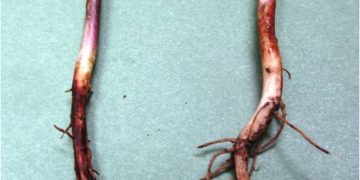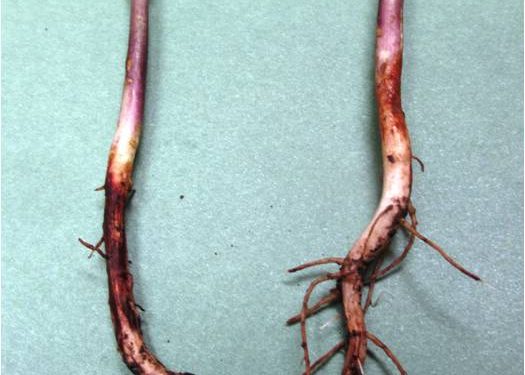#PlantDisease #CropLoss #FungusControl #SeedlingCare #HorticultureTips
Damping off caused by Pythium aphanidermatum is a devastating plant disease that can result in significant economic losses for farmers and horticulturists. The disease is characterized by the sudden collapse and death of young seedlings, especially in wet and cool soil conditions. In this article, we will delve into the causes, symptoms, and consequences of damping off, as well as the preventative measures that can be taken to reduce its impact on plant growth.
Pythium aphanidermatum is a soil-borne fungus that thrives in moist soil environments. When conditions are favorable, the fungus can easily infect and kill young seedlings by rotting their roots and stems. The first symptoms of damping off are typically wilting and yellowing of the seedlings’ lower leaves, followed by the collapse of the stem at the soil line.
The development of damping off can be influenced by several factors, including soil moisture, temperature, pH, and the presence of organic matter. The disease is particularly prevalent in poorly drained soils and in greenhouse environments where high humidity levels are present.
The consequences of damping off can be significant, particularly for commercial growers who rely on the successful germination and growth of seedlings. Losses due to damping off can reduce crop yields and delay production, leading to financial losses and a decreased supply of fresh produce.
To prevent damping off caused by Pythium aphanidermatum, growers should focus on maintaining optimal growing conditions for seedlings. This includes maintaining proper soil drainage, avoiding overwatering, and providing adequate ventilation to reduce humidity levels. Additionally, the use of fungicides and biological controls can help to reduce the impact of damping off on plant growth.
Damping off caused by Pythium aphanidermatum is a destructive disease that can cause significant losses for growers. By understanding the causes and symptoms of the disease, and implementing preventative measures, growers can reduce the impact of damping off on their crops and ensure healthy plant growth.































